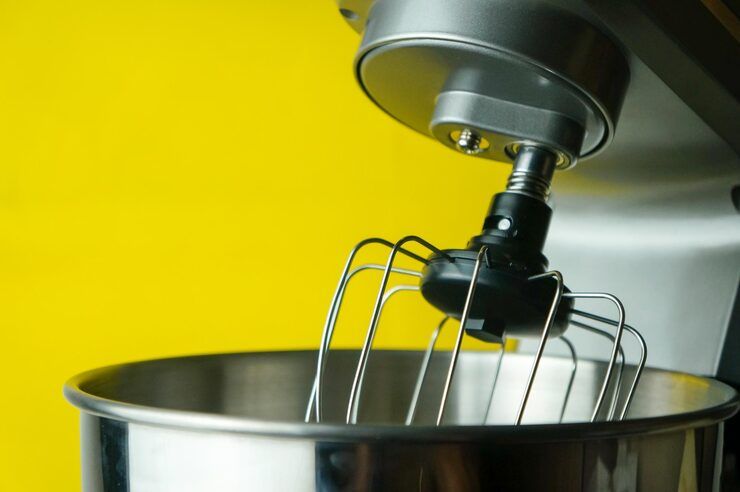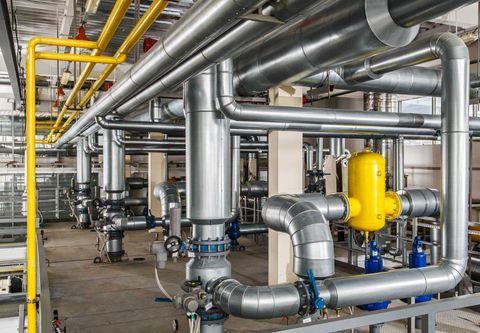The Ultimate Guide to Selecting the Perfect Industrial Mixer Machine
Industrial mixer machines are essential tools in manufacturing processes where materials must be blended, homogenized, or emulsified. These machines play a crucial role in industries such as food processing, pharmaceuticals, chemicals, construction, and cosmetics.
The main purpose of an industrial mixer is to ensure a uniform mix of ingredients, which directly impacts the quality, consistency, and performance of the final product. Over time, these machines have evolved from simple mechanical agitators to advanced, automated systems equipped with digital controls and energy-efficient motors.

As production demands grow and quality standards tighten, selecting the right mixer has become a strategic decision for manufacturers aiming to optimize output and reduce operational costs.
Importance
Choosing the right industrial mixer matters because it directly influences production efficiency, energy use, and product quality. An unsuitable mixer can cause uneven blending, material waste, and increased maintenance costs.
Key reasons why industrial mixers are important include:
-
Efficiency: Properly selected mixers reduce processing time and improve batch consistency.
-
Cost Optimization: A well-matched mixer minimizes waste and energy consumption.
-
Product Quality: Consistent blending ensures the final product meets quality and safety standards.
-
Safety Compliance: Industrial-grade mixers often include safety features that protect operators and prevent equipment damage.
-
Scalability: Machines designed for easy customization and automation can grow alongside production demands.
For manufacturers, selecting the perfect mixer means balancing capacity, material compatibility, and mixing intensity to achieve efficient and safe operations.
Recent Updates
The industrial mixing equipment market has seen rapid technological innovation and demand growth in 2024–2025.
| Trend/Update | Description | Impact on Industry |
|---|---|---|
| Automation and Smart Controls (2024) | Mixers now include IoT-based monitoring for speed, temperature, and torque control. | Improves process precision and reduces manual intervention. |
| Energy-Efficient Designs (2025) | Manufacturers are shifting to variable frequency drives (VFDs) to cut power consumption by 20–30%. | Promotes sustainability and lowers operating costs. |
| Sanitary and Hygienic Mixers (2024) | Especially for food and pharma sectors, stainless steel and CIP (Clean-In-Place) features are now standard. | Ensures hygiene compliance and faster cleaning cycles. |
| High-Viscosity Mixing Solutions | New planetary and dual-shaft mixers handle thicker materials effectively. | Expands applications in adhesives, sealants, and chemicals. |
| Global Market Growth | According to MarketsandMarkets (2025), the global industrial mixer market is projected to reach USD 3.2 billion by 2028. | Reflects rising demand for precision manufacturing solutions. |
These advancements reflect the sector’s move toward smarter, more efficient, and sustainable production practices.
Laws or Policies
Industrial mixer machines are governed by several international and national safety and environmental standards. These regulations ensure operational safety, worker protection, and environmental responsibility.
Key policies include:
-
Occupational Safety and Health Administration (OSHA) Standards (U.S.): Mandate safety guards, emergency stops, and labeling for moving parts.
-
EU Machinery Directive (2006/42/EC): Requires CE marking for mixers sold in the European market, ensuring compliance with mechanical and electrical safety norms.
-
Food and Drug Administration (FDA) Guidelines: For mixers used in food and pharmaceutical applications, materials must be non-reactive, corrosion-resistant, and easy to sanitize.
-
ISO 9001 and ISO 22000 Certifications: Govern quality management and food safety practices during manufacturing.
-
Environmental Regulations: Many countries encourage the use of energy-efficient motors and recyclable materials under sustainability initiatives.
Compliance with these policies not only ensures legal operation but also builds trust with customers and stakeholders.
Tools and Resources
Selecting the perfect industrial mixer requires assessing several technical and operational factors. Below are some tools and resources that can help simplify the process.
1. Online Mixers Selection Tools
-
Mixer Selection Calculator (Silverson.com): Helps users select a mixer type based on product viscosity, batch size, and mixing goal.
-
IKA Online Tool: Provides guidance for selecting laboratory and industrial mixers by industry and process type.
2. Key Comparison Factors
| Parameter | Details | Why It Matters |
|---|---|---|
| Mixing Capacity | Measured in liters or gallons | Determines production volume per batch |
| Viscosity Range | Low to high viscosity compatibility | Affects motor power and blade design |
| Mixing Type | Batch or continuous | Impacts production flexibility |
| Blade Configuration | Paddle, propeller, ribbon, or planetary | Influences mixing intensity and flow |
| Material | Stainless steel, carbon steel, or alloy | Impacts hygiene, corrosion resistance, and durability |
3. Recommended Mixer Types by Industry
| Industry | Mixer Type | Application |
|---|---|---|
| Food & Beverage | Ribbon blender, planetary mixer | Dough, sauces, beverages |
| Chemicals | High-shear mixer, dual-shaft mixer | Emulsions, resins, pigments |
| Pharmaceuticals | Sanitary mixer, vacuum mixer | Ointments, gels, suspensions |
| Construction | Paddle mixer, drum mixer | Cement, mortar, plaster |
| Cosmetics | Emulsifier mixer, planetary mixer | Creams, lotions, gels |
4. Useful Industry Resources
-
American Society of Mechanical Engineers (ASME): Offers guidelines on pressure vessel and mixing system design.
-
National Sanitation Foundation (NSF): Provides certifications for hygienic mixing systems.
-
Engineering Toolbox: Online reference for calculating mixing time and torque.
-
ProcessMix.com: Offers case studies and whitepapers on mixer performance optimization.
FAQs
Q1: What is the main difference between batch and continuous mixers?
Batch mixers handle a fixed amount of material at a time, making them ideal for small-scale or specialized production. Continuous mixers, on the other hand, operate without interruption and are suitable for large-scale, automated manufacturing.
Q2: How do I choose the right mixer capacity?
Capacity depends on the total volume of materials processed per batch. It’s best to choose a mixer that operates at 70–80% of its total volume to ensure optimal blending efficiency.
Q3: Are stainless steel mixers necessary for all applications?
Not always. While stainless steel is recommended for food, cosmetic, and pharmaceutical uses due to hygiene and corrosion resistance, carbon steel mixers are sufficient for construction and chemical industries.
Q4: What are the most common maintenance requirements?
Regular maintenance includes cleaning, lubricating moving parts, checking seals and bearings, and calibrating control panels to prevent downtime and extend equipment life.
Q5: Can industrial mixers be automated?
Yes. Modern mixers come with programmable logic controllers (PLCs) and digital sensors for automated control of speed, temperature, and timing—reducing labor and ensuring consistent results.
Final Thoughts
Selecting the perfect industrial mixer machine is about aligning technology with production goals. The right choice enhances productivity, ensures consistent product quality, and reduces operational costs over time.
Manufacturers should consider critical factors such as mixing capacity, viscosity range, energy efficiency, and compliance with safety standards. With innovations like IoT integration and energy-saving motors, modern industrial mixers are becoming smarter and more adaptable to diverse applications.
Ultimately, investing time in careful selection, regular maintenance, and compliance with safety standards ensures long-term value and reliability in any manufacturing environment.




